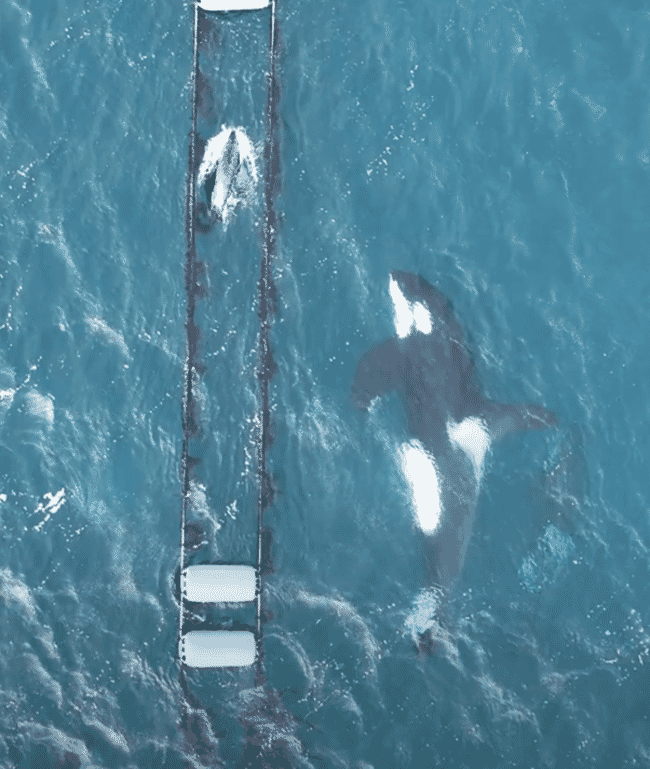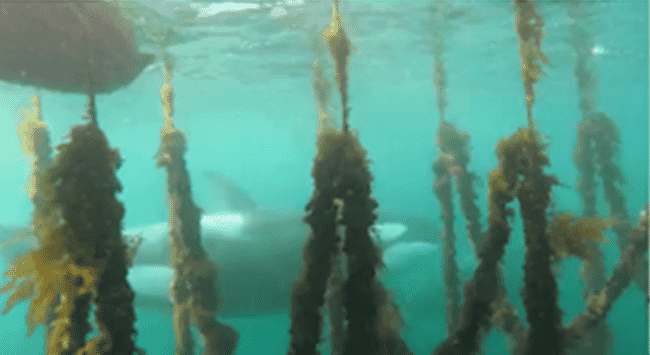
© Neil McCaffrey
The seal was caught on camera by local drone pilot Nick McCaffrey, who captured 38 minutes of footage of eight orcas hunting the seal, which tried to hide between two lines of mussel ropes.
The seal eventually left the safety of the mussel ropes and headed into open water, where it was quickly captured and dispatched by the orca.
The chase happened on 6 March 2022 at the Grunna Voe mussel farm, in an inlet just north of Shetland’s capital, Lerwick.
The footage was analysed by Emily Hague, a PhD student at Heriot-Watt University, who is researching the impact of human activities – including man-made structures like fish farms and offshore energy developments – on marine mammals.
“Interactions involving man-made structures are rarely, if ever, caught on camera. This makes this footage extra special and very insightful from a scientific point of view,” said Hague in a press release.

© Neil McCaffrey
“It gives us a whole new perspective on how marine life – in this case two top predators – are living with manmade structures in our seas.”
“It’s fascinating that these novel structures in the marine environment are potentially being used by prey to hide from predators. Interactions like this can also shed light on potential risks to marine mammals.
“Last year a juvenile member of this killer group died entangled in rope and was found on Orkney. If this group is spending a lot of time around marine structures, then this may have associated risks, like entanglement.”
The drone pilot and other wildlife enthusiasts were alerted to the orcas’ arrival by the Shetland Orca Sightings Facebook page and a dedicated Whatsapp group, both managed by wildlife photographer and guide Hugh Harrop.
This enabled the drone pilot to trace their route as the whales travelled from just south of Lerwick towards the mussel farm.
Hague has published her full findings in the latest edition of Aquatic Mammals (Issue 48.4).


